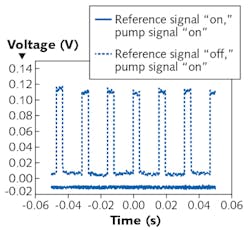Modulated silicon doping improves GaN-based vertical-cavity surface-emitting lasers

Because of the nature of nitride compounds, blue-emitting gallium nitride (GaN)-based vertical-cavity surface-emitting lasers (VCSELs) have been tough to make. The structures designed for commercializing these devices have poor conducting properties, and existing approaches to improve the conductivity introduce fabrication complexities while performance is inhibited. Now, researchers at Meijo University and Nagoya University in Japan demonstrated a design and experimental prototype of a GaN-based VCSEL that provides good electrical conductivity and is readily grown.
The laser cavity of a typical VCSEL is defined by distributed-Bragg-reflector (DBR) mirrors. But DBR structures have low conductivity because of polarization charges between its layers of aluminum indium nitride (AlInN) and GaN. Intracavity contacts can help improve the poor conductivity of GaN VCSELs, but these increase the cavity size and, because of their presence in the cavity, result in a higher threshold-current density and a lower slope efficiency. In the new VCSEL, modulated silicon doping in the AlInN/GaN DBR nitride layers reduce the effect of polarization charges and boost the conductivity of the DBR layers. The peak reflectivity of a 46-pair, silicon-doped rear DBR mirror is on the order of 99.99% or greater—in comparison, a 40-layer, undoped DBR mirror has a peak reflectivity of only 99.7%. The laser has a threshold current of 2.6 mA and an operating voltage of 4.7 V. Reference: K. Ikeyama et al., Appl. Phys. Express (2016); http://iopscience.iop.org/1882-0786/9/10/102101.
About the Author
John Wallace
Senior Technical Editor (1998-2022)
John Wallace was with Laser Focus World for nearly 25 years, retiring in late June 2022. He obtained a bachelor's degree in mechanical engineering and physics at Rutgers University and a master's in optical engineering at the University of Rochester. Before becoming an editor, John worked as an engineer at RCA, Exxon, Eastman Kodak, and GCA Corporation.
